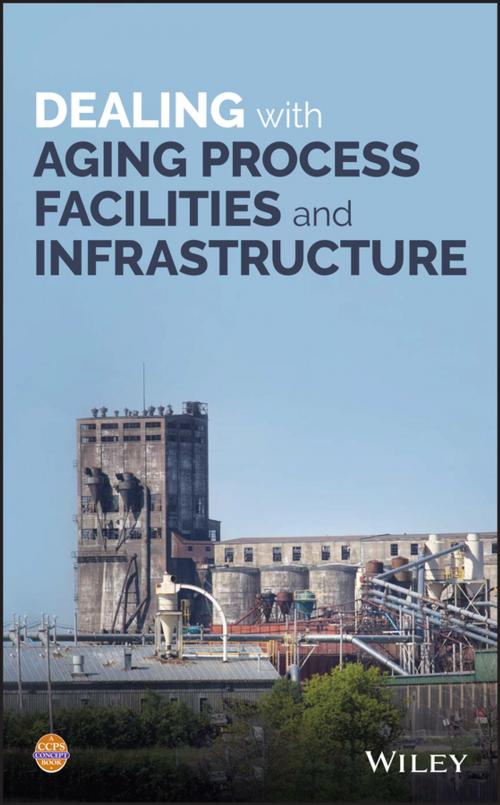Dealing with Aging Process Facilities and Infrastructure
Nonfiction, Science & Nature, Technology, Engineering, Chemical & Biochemical| Author: | CCPS (Center for Chemical Process Safety) | ISBN: | 9781119430759 |
| Publisher: | Wiley | Publication: | April 3, 2018 |
| Imprint: | Wiley-AIChE | Language: | English |
| Author: | CCPS (Center for Chemical Process Safety) |
| ISBN: | 9781119430759 |
| Publisher: | Wiley |
| Publication: | April 3, 2018 |
| Imprint: | Wiley-AIChE |
| Language: | English |
Examines the concept of aging process facilities and infrastructure in high hazard industries and highlights options for dealing with the problem while addressing safety issues
This book explores the many ways in which process facilities, equipment, and infrastructure might deteriorate upon continuous exposure to operating and climatic conditions. It covers the functional and physical failure modes for various categories of equipment and discusses the many warning signs of deterioration. Dealing with Aging Process Facilities and Infrastructure also explains how to deal with equipment that may not be safe to operate. The book describes a risk-based strategy in which plant leaders and supervisors can make more informed decisions on aging situations and then communicate them to upper management effectively. Additionally, it discusses the dismantling and safe removal of facilities that are approaching their intended lifecycle or have passed it altogether.
Filled with numerous case studies featuring photographs to illustrate the positive and negative experiences of others who have dealt with aging facilities, Dealing with Aging Process Facilities and Infrastructure covers the causes of equipment failures due to aging and their consequences; plant management commitment and responsibility; inspection and maintenance practices for managing life cycle; specific aging asset integrity management practices; and more.
- Describes symptoms and causal mechanisms of aging in various categories of process equipment
- Presents key considerations for making informed risk-based decisions regarding the repair or replacement of aging process facilities and infrastructure
- Discusses practices for managing process facility and infrastructure life cycle
- Includes examples and case histories of failures related to aging
Dealing with Aging Process Facilities and Infrastructure is an important book for industrial practitioners who are often faced with the challenge of managing process facilities and infrastructure as they approach the end of their useful lifecycle.
Examines the concept of aging process facilities and infrastructure in high hazard industries and highlights options for dealing with the problem while addressing safety issues
This book explores the many ways in which process facilities, equipment, and infrastructure might deteriorate upon continuous exposure to operating and climatic conditions. It covers the functional and physical failure modes for various categories of equipment and discusses the many warning signs of deterioration. Dealing with Aging Process Facilities and Infrastructure also explains how to deal with equipment that may not be safe to operate. The book describes a risk-based strategy in which plant leaders and supervisors can make more informed decisions on aging situations and then communicate them to upper management effectively. Additionally, it discusses the dismantling and safe removal of facilities that are approaching their intended lifecycle or have passed it altogether.
Filled with numerous case studies featuring photographs to illustrate the positive and negative experiences of others who have dealt with aging facilities, Dealing with Aging Process Facilities and Infrastructure covers the causes of equipment failures due to aging and their consequences; plant management commitment and responsibility; inspection and maintenance practices for managing life cycle; specific aging asset integrity management practices; and more.
- Describes symptoms and causal mechanisms of aging in various categories of process equipment
- Presents key considerations for making informed risk-based decisions regarding the repair or replacement of aging process facilities and infrastructure
- Discusses practices for managing process facility and infrastructure life cycle
- Includes examples and case histories of failures related to aging
Dealing with Aging Process Facilities and Infrastructure is an important book for industrial practitioners who are often faced with the challenge of managing process facilities and infrastructure as they approach the end of their useful lifecycle.















